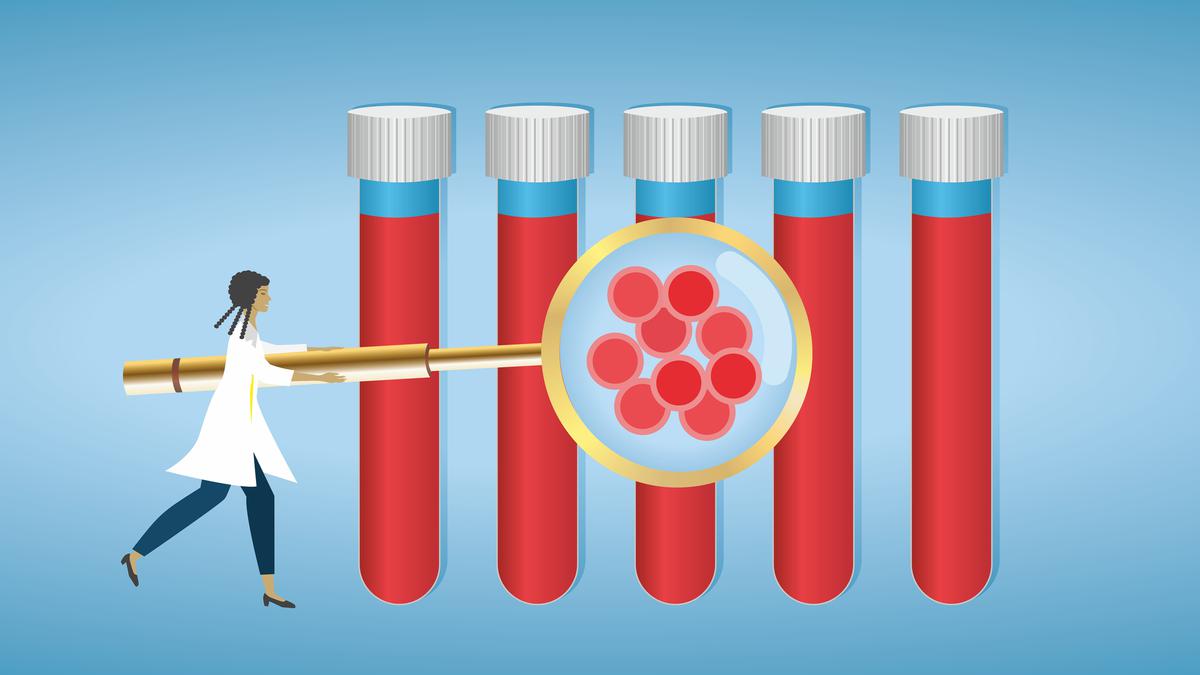
The irrevocable connection between anaemia and maternal health Premium
The Hindu
A study in the Lancet conducted on anaemic pregnant women of low-and middle-income countries has found that there is a strong link between anaemia and postpartum haemorrhage, with the risk of death or near miss very high
The WOMAN-2 trial collaborators, ‘Maternal anaemia and the risk of postpartum haemorrhage: a cohort analysis of data from the WOMAN-2 trial’, The Lancet, June 27, 2023, doi.org/10.1016/S2214-109X(23)00245-0
Of late anaemia has been in the news in India, what with the government proposing to remove a question on it from the National Family Health Survey (NFHS) and instead do a more elaborate test to determine haemoglobin levels in the blood as part of the Diet and Biomarker (DAB) survey. A paper recommending that normative values for haemoglobin must be lowered in India, based on a small study, has also come in for criticism. The WhatsApp groups of two professional sectors, where repartees have been flying hard and fast are those belonging to nutritionists and obstetricians and gynaecologists. The latter groups who have actually seen the impact of anaemia especially on maternal and infant health have been articulating their views on keeping the standards for anaemia, and to not amend them based on a statistically insignificant study. Policy makers in India must allow the results of a multi-country study published recently in The Lancet to inform their rules on measuring anaemia, handling it and making sure the interventions are sensible and far reaching.
Anaemia has a very strong link with postpartum haemorrhage (excessive vaginal bleeding after delivery), and the risk of death or near miss is very high.
As per the study, by the WOMAN (World Maternal Antifibrinolytic )-2 trial collaborators, worldwide, more than half a billion women of reproductive age are anaemic. Each year, about 70,000 women who give birth die from postpartum haemorrhage, almost all of them in low-and middle-income countries. While a known risk of anaemia or low haemoglobin levels is postpartum death, researchers decided to examine in detail the association between anaemia and the risk of postpartum haemorrhage.
This trial enrolled over 10,000 women with moderate or severe anaemia giving birth vaginally in hospitals in Pakistan, Nigeria, Tanzania, and Zambia, countries where anaemia in pregnancy was common and established by other trials. They examined the continuous association between prebirth haemoglobin and the risk of postpartum haemorrhage in a large cohort of women from low-and middle-income countries. The advantage of examining anaemia as a continuous variable, the authors argued, is that demonstration of a monotonic biological gradient is more suggestive of a causal relationship. The outcome was defined as an occurrence of postpartum haemorrhage, defined in three ways: “clinical postpartum haemorrhage (estimated blood loss ≥500 mL or any blood loss sufficient to compromise haemodynamic stability); WHO-defined postpartum haemorrhage (estimated blood loss of at least 500 mL); and calculated postpartum haemorrhage (blood loss of ≥1,000 mL).
The mean age of the women from Pakistan, Nigeria, Tanzania and Zambia was just over 27 years. There was clear evidence from the study that lower haemoglobin values had a direct relationship with volume blood loss, and clinical postpartum haemorrhage. “We found that with decreasing maternal haemoglobin concentration, the risk of postpartum haemorrhage increases monotonically,” the authors recorded.
Anaemia reportedly reduces the oxygen-carrying capacity of blood, and therefore, women with anaemia cannot tolerate the same volume of bleeding as healthy women, and become shocked after a smaller volume blood loss, the authors reasoned. Further they added, “Given the lack of an established definition of postpartum haemorrhage in women with anaemia, before conducting this study, we examined different definitions of postpartum haemorrhage in terms of their specificity for substantial bleeding, and their association with fatigue, physical endurance, and breathlessness.” They eventually found that a clinical diagnosis of postpartum haemorrhage was highly specific for clinical signs of shock and irrevocably associated with worse maternal function.

“Writing, in general, is a very solitary process,” says Yauvanika Chopra, Associate Director at The New India Foundation (NIF), which, earlier this year, announced the 12th edition of its NIF Book Fellowships for research and scholarship about Indian history after Independence. While authors, in general, are built for it, it can still get very lonely, says Chopra, pointing out that the fellowship’s community support is as valuable as the monetary benefits it offers. “There is a solid community of NIF fellows, trustees, language experts, jury members, all of whom are incredibly competent,” she says. “They really help make authors feel supported from manuscript to publication, so you never feel like you’re struggling through isolation.”

Several principals of government and private schools in Delhi on Tuesday said the Directorate of Education (DoE) circular from a day earlier, directing schools to conduct classes in ‘hybrid’ mode, had caused confusion regarding day-to-day operations as they did not know how many students would return to school from Wednesday and how would teachers instruct in two modes — online and in person — at once. The DoE circular on Monday had also stated that the option to “exercise online mode of education, wherever available, shall vest with the students and their guardians”. Several schoolteachers also expressed confusion regarding the DoE order. A government schoolteacher said he was unsure of how to cope with the resumption of physical classes, given that the order directing government offices to ensure that 50% of the employees work from home is still in place. On Monday, the Commission for Air Quality Management in the National Capital Region and Adjoining Areas (CAQM) had, on the orders of the Supreme Court, directed schools in Delhi-NCR to shift classes to the hybrid mode, following which the DoE had issued the circular. The court had urged the Centre’s pollution watchdog to consider restarting physical classes due to many students missing out on the mid-day meals and lacking the necessary means to attend classes online. The CAQM had, on November 20, asked schools in Delhi-NCR to shift to the online mode of teaching.









